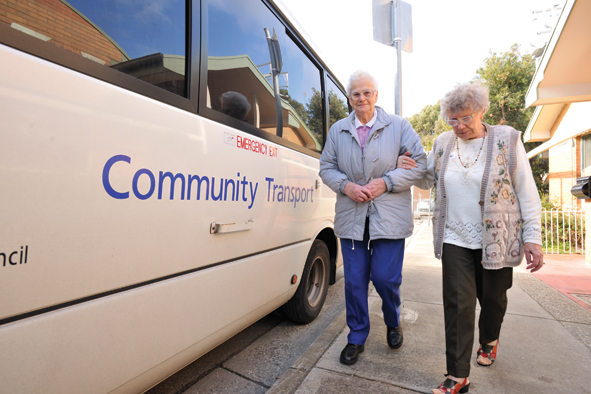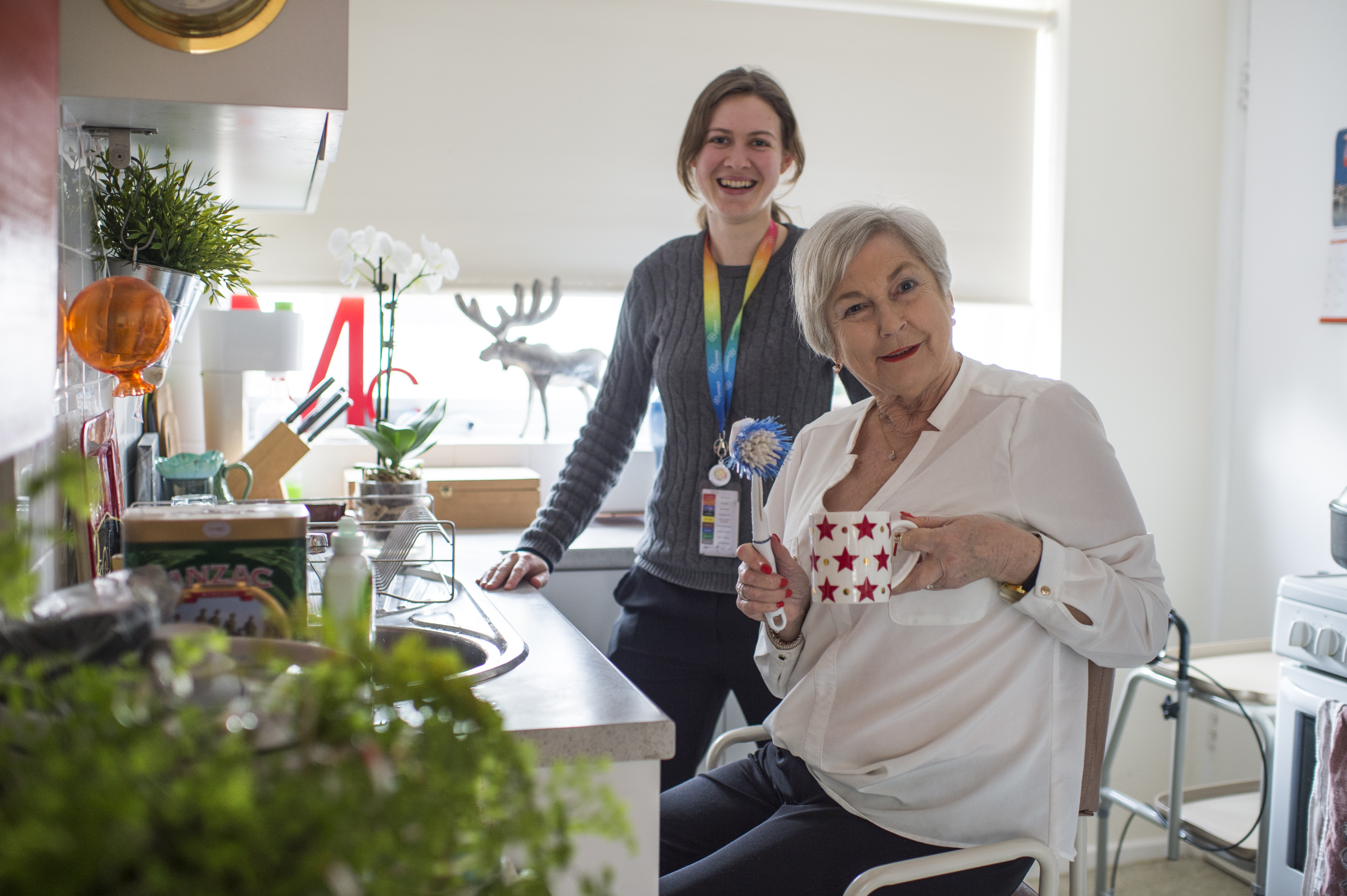Select from the following services

As some of us who feel the cold may have discovered, mandatory mask wearing can help keep your nose warm during your daily winter walk – reinforcing just how cold our days are getting with winter well and truly here.
Many of us with conditions like fibromyalgia, lupus, osteoarthritis, rheumatoid arthritis, back pain and Raynauds’s phenomenon, feel the cold more keenly with increased joint and muscle pain, or lack of blood circulation to the extremities.
Connect Health & Community’s physiotherapy, hydrotherapy, diet and nutrition and exercise groups can help people with chronic pain and those who feel the cold to stay comfortable through the winter chills.
Our Older Adults Program team shares some top tips from Musculoskeletal Australia to help you stay warm and keep the costs down as much as possible:
Dress for success
Let’s start with the basics. We need to dress for the temperature and wear layers of clothing. While it can feel cumbersome at times, but it’s one of our best defences against the cold. So put on the warm pants and jumper, embrace your inner Wiggle and wear a skivvy, pull on your thick socks and/or tights and appropriate footwear. We need to do this when we’re indoors and add more layers when we go outside – including hats, gloves, scarves and masks (as required).
Deal with draughts
Cover the bottom of your door with a door snake or add some door seals. Pull your curtains and blinds over the windows at night, and during miserable days to keep the warmth inside. If you have floorboards, consider putting down rugs (be careful they don’t become a trip hazard). And check out these handy DIY draught-proofing videos from the City of Port Phillip (Melbourne).
Turn down the temperature
While it’s tempting to crank the heat up, the most efficient temperature to set your heater to (if you can set the temp) is 18-20 degrees. While that may not sound particularly warm, we’re often outside during the warmer months wearing short sleeves when it’s 18-20 degrees. It’s just a matter of perspective.
And only heat the areas you’re using. If you’re able to turn the heating off in unused parts of your home, do it. Shut the doors and use a draught stopper to prevent the warm air from the rest of the house escaping into these areas.
Let the sun shine in
Open your curtains and blinds on sunny days to let the sun shine on your windows. Even if there’s a chilly wind, the sun will bring some wonderful warmth into your home. And remember to close them when the sun goes down.
Snuggle up
Get cosy on the couch with your partner, kids or pets. Grab a warm blanket or doona, share your body heat and just enjoy being together.
Turn it off at night
You sleep better when your body has a chance to cool down a little, so turn the heater off at night. It’s also safer to sleep with the heater off. You can remove the chill from your bed by using a hot water bottle or an electric blanket. Just don’t forget to turn your electric blanket off before you go to sleep.
Winter-proof your bed
There’s nothing like slipping into a deliciously warm bed on a cold night, especially if there’s soft flannelette involved! So swap out your lighter, everyday bedding for heavier winter ones. And add layers – a top sheet (if you don’t already use one) and extra blankets. Finally, if you have floorboards in your bedroom, adding a rug under your bed can prevent any draughts from making their way to your bed.
Get active
Go for a brisk walk outdoors – wearing appropriate clothing – and you’ll soon warm up in no time. When you’re at home, exercise indoors using an online program, a DVD or an app. Play with the kids. Clean the house. Do anything that gets you moving and you’ll feel warmer than you would if you sit in one place for hours on end. However, if you’re having a flare or experiencing a lot of pain, be as active as you can within your limits. And use your heat packs to help relieve muscular pain.
Shorten your shower, if you can
Many of us use our shower to warm up sore joints and muscles so we can get moving. However hot water uses a lot of energy, and even a few minutes extra will add to your bill. If you’re able to, shorten the amount of time you spend in the shower, even if it’s just a little.
Move clothes horses away from the heater
Anything that blocks a heater will prevent the warm air from flowing around the room uninterrupted. So move clothes horses or other obstructions away from the heat source. And to stay safe, fire authorities say you should keep clothing one metre from your heater.
Use heat packs and hot water bottles
If you’re feeling stiff and sore, heat packs or hot water bottles can help get you up and about and provide temporary pain relief. Always follow the instructions when using them including: don’t overheat them or smother them under blankets or clothes, and let them cool down between use. It‘s also important to let your skin temperature return to normal before using them again. Finally, it’s very easy to burn yourself using heat packs and hot water bottles, so don’t place them directly onto your skin. And check their temperature before use to make sure they’re not too hot.
Warm up from the inside out
There are lots of delicious winter recipes that bring comfort and warmth on the most miserable days. So crack open the cookbooks and get inspired to make some yummy, warming drinks, curries, soups and stews.
Working from home
If you’re working from home and/or home-schooling, Energy.gov.au has some simple tips to reduce your energy usage.
Billing and payment help
If you’re struggling to pay your energy bills, Energy.gov.au also has some information to help you, including information about the Australian Energy Regulator’s expectations of energy companies to protect householders and small business customers during the COVID-19 pandemic.
Insulate
If your house isn’t adequately insulated, this is something you can do for long-term benefit. Obviously there’s a substantial upfront outlay, but it may be an option for some households. Find out more about insulation, including the different types available and how to install it, from the government’s Your Home website.
For support from a Connect Health & Community physiotherapist or dietitian to help your body deal with winter, call us today on 03) 9575 5333 or visit our physiotherapy page.
CREDIT: Thanks to Musculoskeletal Australia and City of Port Phillip.
A youth mental health initiative developed with students during Victoria’s lockdowns, is hoped to help reduce the stigma surrounding mental health issues and encourage teens to seek help early.
Read MoreOur Health Promotion team is supporting early learning centers through the Achievement Program, an initiative that helps services create a healthier environment for their students, staff and families.
Read MoreThis Children’s Week, we asked our paediatric team to share some of their favourite activities for kids that embrace the importance of play for a healthy lifestyle.
Read More
Speech pathologists provide assessment and management of communication, swallowing and feeding difficulties.
Read More
We have been offering safe and quality door-to-door transport options to our community since 1975.
Read More
We provide Occupational Therapy to help children, adults and those experiencing mental health issues, to achieve their full potential.
Read MoreSelect from the following services